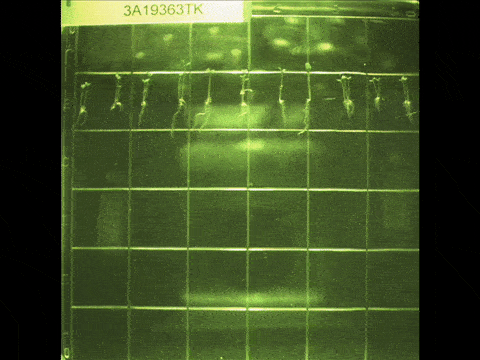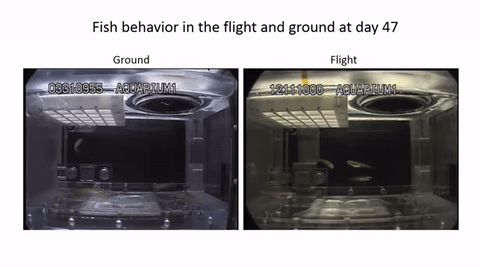
Learning how spaceflight affects living organisms will help us understand potential health risks related to humans on long duration missions, including our journey to Mars. Cells, microbes, animals and plants are affected by microgravity, and studying the processes involved in adaptation to spaceflight increases our fundamental understanding of biological processes on Earth. Results on Earth from biological research in space include the development of new medications, improved agriculture, advancements in tissue engineering and regeneration etc.
Some biological research experiments on the ISS:

Biomolecule Sequencing
Biomolecule Sequencer: hopes to demonstrate (for the first time) that DNA sequencing is feasible in an orbiting spacecraft. Why? A space-based DNA sequencer could identify microbes, diagnose diseases and understand crew member health, and potentially detect DNA- based life elsewhere in the solar system.
Ant-stronauts: Insights into how ants answer collective search problems. Watching how the colony adapts as a unit in the quest for resources in extreme environments, like space, provides data that can be used to build algorithms with varied applications. Understanding how ants search in different conditions could have applications for robotics.

ant-stronauts…as in ants in space
TAGES: The TAGES experiment (Transgenic Arabidopsis Gene Expression System) looks to see how microgravity impacts the growth of plant roots. Fluorescent markers placed on the plant’s genes allow scientists to study root development of Arabidopsis (a cress plant) grown on the space station. Evidence shows that directional light in microgravity skews root growth to the right, rather than straight down from the light source. Root growth patters on station mimic that of plants grown at at 45% degree angle on Earth. Space flight appears to slow the rate of the plant’s early growth as well.
Heart Cells:

TAGES experiment (Transgenic Arabidopsis Gene Expression System)
Spaceflight can cause a suite of negative health effects, which become more problematic as crew members stay in orbit for long periods of time. Effects of Microgravity on Stem Cell-Derived Cardiomycytes studies the human heart, specifically how heart muscle tissue contracts, grows and changes in microgravity. Understanding how heart muscle cells change in space improves efforts for studying disease, screening drugs and conducting cell replacement therapy for future space missions.
Medaka Fish: Jaw bones of Japanese Medaka fish in microgravity show decreased mineral density and increased volume of osteoclasts. Results from this study improve our understanding of the mechanisms behind bone density and organ tissue changes in space.

Japanese Medaka fish in microgravity
These experiments, and many others, emphasize the importance of biological research on the space station. Understanding the potential health effects for crew members in microgravity will help us develop preventatives and countermeasures.
http://nasa.tumblr.com/post/148885190629/space-station-science-biological-research







Recent Comments